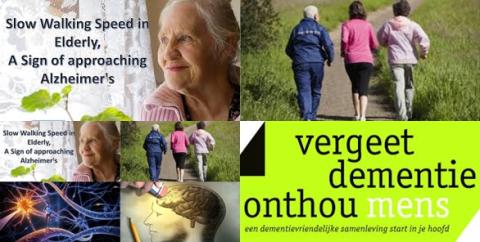
Objectives:
Data on the longitudinal association of walking pace with the risk of cognitive decline and dementia are inconsistent and inconclusive. Therefore, this meta-analysis (review) of prospective cohort studies has been conducted.
Does walking pace reduce risk of cognitive decline or dementia in elderly populations?
Study design:
This review article included 17 prospective cohort studies, including 10 studies reporting the RR of cognitive decline (9,949 participants and 2,547 events) and 10 presenting the RR of dementia (14,140 participants and 1,903 events).
Results and conclusions:
The investigators found for the lowest comparing to the highest category of walking pace, a significant increased risk of 89% [pooled RR = 1.89, 95% CI = 1.54-2.31] for cognitive decline in elderly populations.
The investigators found for the lowest comparing to the highest category of walking pace, a significant increased risk of 66% [pooled RR = 1.66, 95% CI = 1.43-1.92] for dementia in elderly populations.
The investigators found with every 1 dm/s (360 m/h) decrement in walking pace, the risk of dementia was significantly increased by 13% [RR = 1.13, 95% CI = 1.08-1.18].
The investigators concluded that slow or decreased walking pace is associated with elevated risk of cognitive decline and dementia in elderly populations.
Original title:
Walking Pace and the Risk of Cognitive Decline and Dementia in Elderly Populations: A Meta-analysis of Prospective Cohort Studies by Quan M, Xun P, [...], He K.
Link:
https://www.ncbi.nlm.nih.gov/pubmed/27927757
Additional information of El Mondo:
Find here more information/studies about elderly and sport nutrition.
According to WHO in order to improve cardiorespiratory and muscular fitness, bone and functional health, reduce the risk of NCDs, depression and cognitive decline:
- Older adults (aged 65 and above) should do at least 150 minutes of moderate-intensity aerobic physical activity throughout the week or do at least 75 minutes of vigorous-intensity aerobic physical activity throughout the week or an equivalent combination of moderate- and vigorous-intensity activity.
- Aerobic activity should be performed in bouts of at least 10 minutes duration.
- For additional health benefits, older adults should increase their moderate-intensity aerobic physical activity to 300 minutes per week, or engage in 150 minutes of vigorous-intensity aerobic physical activity per week, or an equivalent combination of moderate-and vigorous-intensity activity.
- Older adults, with poor mobility, should perform physical activity to enhance balance and prevent falls on 3 or more days per week.
- Muscle-strengthening activities, involving major muscle groups, should be done on 2 or more days a week.
- When older adults cannot do the recommended amounts of physical activity due to health conditions, they should be as physically active as their abilities and conditions allow.